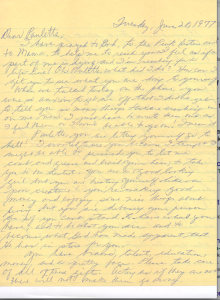” i sat up one nite walkin a boardin housescreamin/ cryin/ the ghost of another womanwho waz missin what i waz missini wanted to jump up outta my bones& be done wit myselfleave me alone& go on in the windit waz too muchi fell into a numbnesstil the only tree i cd seetook me up in her branchesheld me in the breezemade me dawn dewthat chill at daybreakthe sun wrapped me up swingin rose light everywherethe sky laid over me like a million meni waz cold/ i waz burnin up/ a child & endlessly weavin garments for the moonwit my tearsi found god in myself& i loved her/ i loved her fiercely
All of the ladies repeat to themselves softly the lines ‘i found god in myself & i loved her.’ It soon becomes a song of joy, started by the lady in blue. The ladies sing first to each other, then gradually to the audience. After the song peaks the ladies enter into a closed tight circle.” (62/)
–For Colored Girls Who Have Considered Suicide When the Rainbow is Enuf
Since my last archival find, I have been focusing on letters and the intimacy and the truth they hold and how it relates to Shange’s life and work I am engaging with. This has been instrumental to my focus on self-portraiture and black girlhood as it allows me to gain insight on the intimacies and the key individuals who have been instrumental in her creative processes and personal growth. I also feel confident in saying that in the works of Shange, they are not separate entities.
In the letter addressed to Shange, her mother states “You have brains, talent, education, money and a pretty face. Please take care of all these gifts. Acting as if they are not there will not make them go away. Please, please think about yourself. Find God, in yourself. Don’t add insult to injury!” This sentence takes me back to Shange’s For Colored Girls Who Have Considered Suicide Considered When The Rainbow is Enuf and her encouragement to herself and women beyond to find god in herself is coming from a place that is saturated with love and care. This letter is affirming as it solidifies my argument. Black girls self-portraiture is relational to representations that are resonant in their daily lives. That is not to say that black girls are not able to create people who they want to be outside of the “home” or their place of “belonging”. It is evident that Shange’s mother was instrumental in her processes of healing and of growth. Here we see Shange’s mother is earnest in asking her to find wellness and having gratitude for herself and her fruitfulness.



